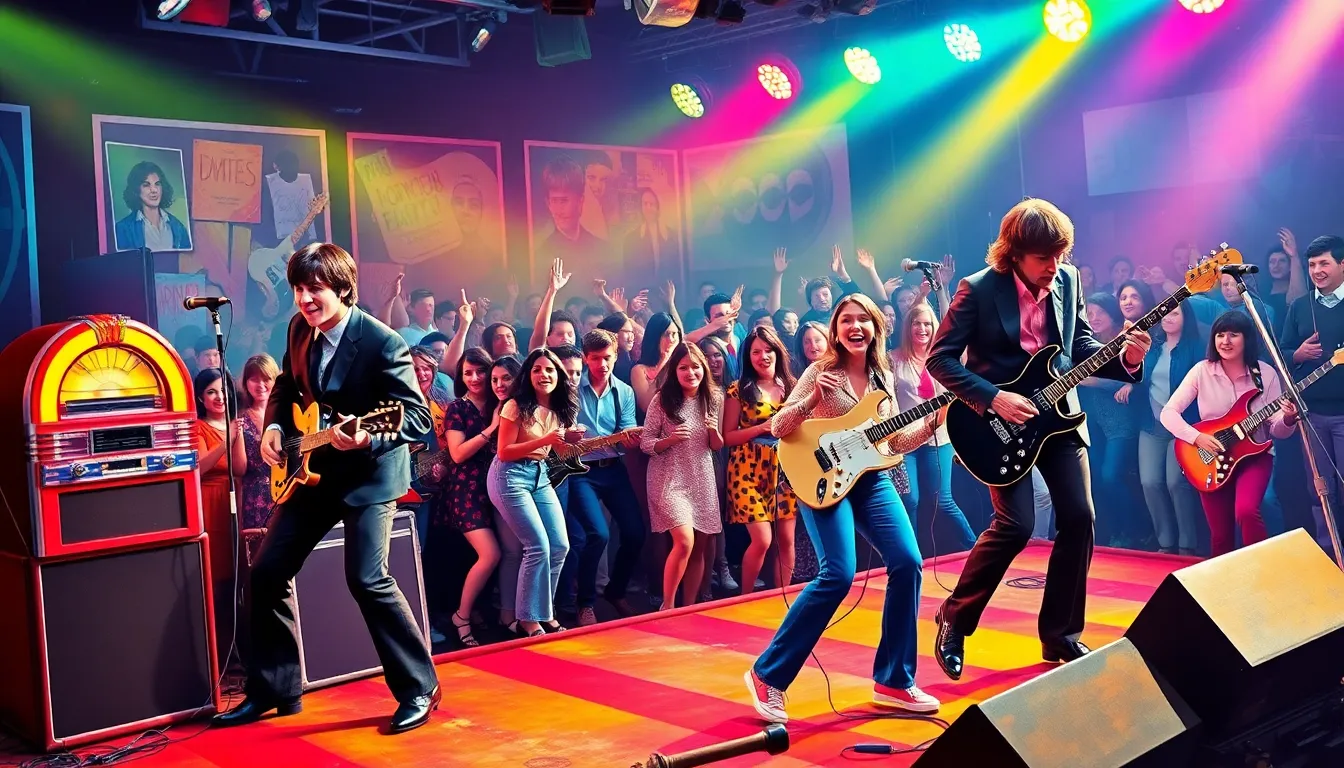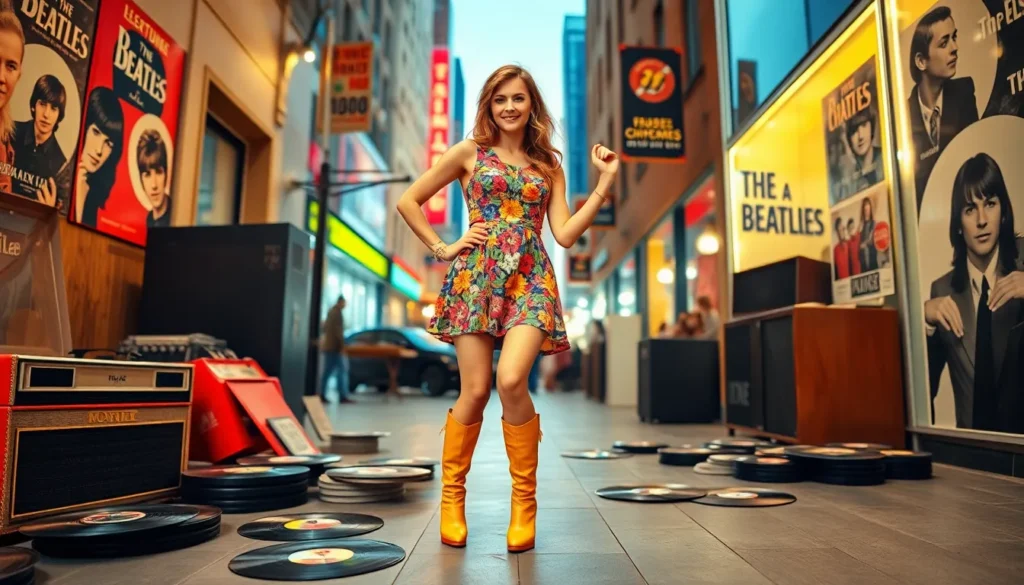Table of Contents
ToggleGet ready to groove. The 1960s wasn’t just a decade: it was a revolutionary movement that reshaped music, film, fashion, and societal norms. Think of it as the world waking up from a long nap, fueled by rock anthems, protest songs, and a kaleidoscope of vibrant fashion choices. So, if you’re curious about how the decade that brought us The Beatles and civil rights activism continues to influence our world today, buckle up. We’re diving deep into the cultural currents of this unforgettable era.
Key Music Trends of the 1960s

The Rise of Rock and Roll
When it comes to the 1960s, rock and roll was not just a genre: it was a generation’s battle cry. Picking up from the previous decade, the sound exploded with bands like The Rolling Stones and The Beatles setting trends that would reverberate for decades. With electrifying guitars, poignant lyrics, and rebellious spirits, these musicians turned rock into a cultural phenomenon transcending music to embrace lifestyle choices, attitudes, and fashion. The music captured the essence of a generation yearning for change and excitement.
Influence of Motown and Soul
Simultaneously, Motown emerged from Detroit, infusing soul into the mainstream. Artists like Marvin Gaye and Aretha Franklin brought rhythm that not only sparkled on the charts but also resonated deeply within the fabric of society. Songs like “I Heard It Through the Grapevine” became anthems of love, heartbreak, and social awakening. The compelling beats had people dancing, but they also served as soundtracks to the struggles of racial equality, making Motown much more than just catchy tunes.
Folk Music as a Vehicle for Change
Meanwhile, folk music found its voice in figures like Bob Dylan and Joan Baez. Their acoustic sounds and meaningful lyrics provided a space for commentary on the hot-button issues of the day, war, civil rights, and environmental concerns. Songs became a rallying point, drawing crowds to protests, and solidifying folk’s role in shaping public consciousness. This genre proved that music wasn’t just entertainment: it was a powerful instrument of social change.
Major Music Festivals and Their Impact
The 1960s brought forth legendary music festivals that highlighted the decade’s dramatic evolution. The 1969 Woodstock Festival, perhaps the most famous, showcased not only musical talent but a cultural ethos centered around peace, love, and anti-establishment sentiments. The synergy between artists and audiences created an atmosphere that felt electric, as attendees embraced a shared vision for change. Festivals served as catalysts for the counterculture movement, advocating not just for musical freedom but social liberation.
Similarly, events like the Monterey Pop Festival played pivotal roles in launching the careers of iconic artists. Such gatherings acted as melting pots for disparate musical styles, uniting people from various walks of life, further solidifying the decade’s legacy. Festivals cemented the realization that music could be a unifying force, a purpose that extended far beyond entertainment.
Cultural Shifts in Film and Television
Iconic Movies of the 1960s
Cinema during the 1960s reflected and often propelled cultural change. Movies like “Easy Rider” and “The Graduate” challenged traditional narratives, portraying a society grappling with its identity. They pushed boundaries, addressing themes of disillusionment and rebellion. These films were not merely cinematic experiences: they captured the essence of a generation questioning authority and societal norms.
Television Revolution: New Genres and Formats
Television underwent a dramatic transformation during this time too. Shows like “The Twilight Zone” and “Star Trek” introduced new formats, blending science fiction with social commentary. They addressed issues like race, war, and cultural identity in ways that captivated audiences while sparking conversations beyond the living room. This shift in storytelling signaled the dawn of a more progressive narrative framework, laying groundwork for future generations of media.
The Role of Satire and Social Commentary
Political satire thrived in the 1960s, reflected in shows like “The Smothers Brothers Comedy Hour.” Comedians began to use humor as a vehicle for addressing serious issues. This blend of entertainment and social critique set the stage for modern comedic voices, allowing laugh-out-loud moments to simultaneously provoke thought. In a time of immense societal upheaval, satire encouraged audiences to question everything from the government to culture itself, making it an essential part of the decade’s creative landscape.
Fashion Trends That Defined the Era
Fashion in the 1960s was a vibrant kaleidoscope of self-expression. The rise of youth culture led to styles that challenged the norm. Miniskirts, bell-bottoms, and psychedelic prints dominated the streets, with designers like Mary Quant and André Courrèges pushing boundaries. This wasn’t just about clothes: it represented a rejection of conservative values. The fashion race wasn’t merely about looking good: it was about empowerment and freedom. The influence of music echoed in the clothing choices too, with bands often setting trends as much as they were creating hits.
The Impact of Civil Rights and Counterculture Movements
The 1960s also witnessed the rise of civil rights movements that brought systemic injustices to the forefront. The music, film, and fashion of the time took cues from activists striving for equality. Artists like Nina Simone and Sam Cooke crafted songs that spoke out against racism and injustice, fueling the fire of movements seeking change. The counterculture, characterized by ideals of peace and love, gathered momentum with protests against the Vietnam War, leading to a reevaluation of societal norms. This spirit of activism permeated all aspects of pop culture, marking the 1960s as a pivotal decade of transformation.




